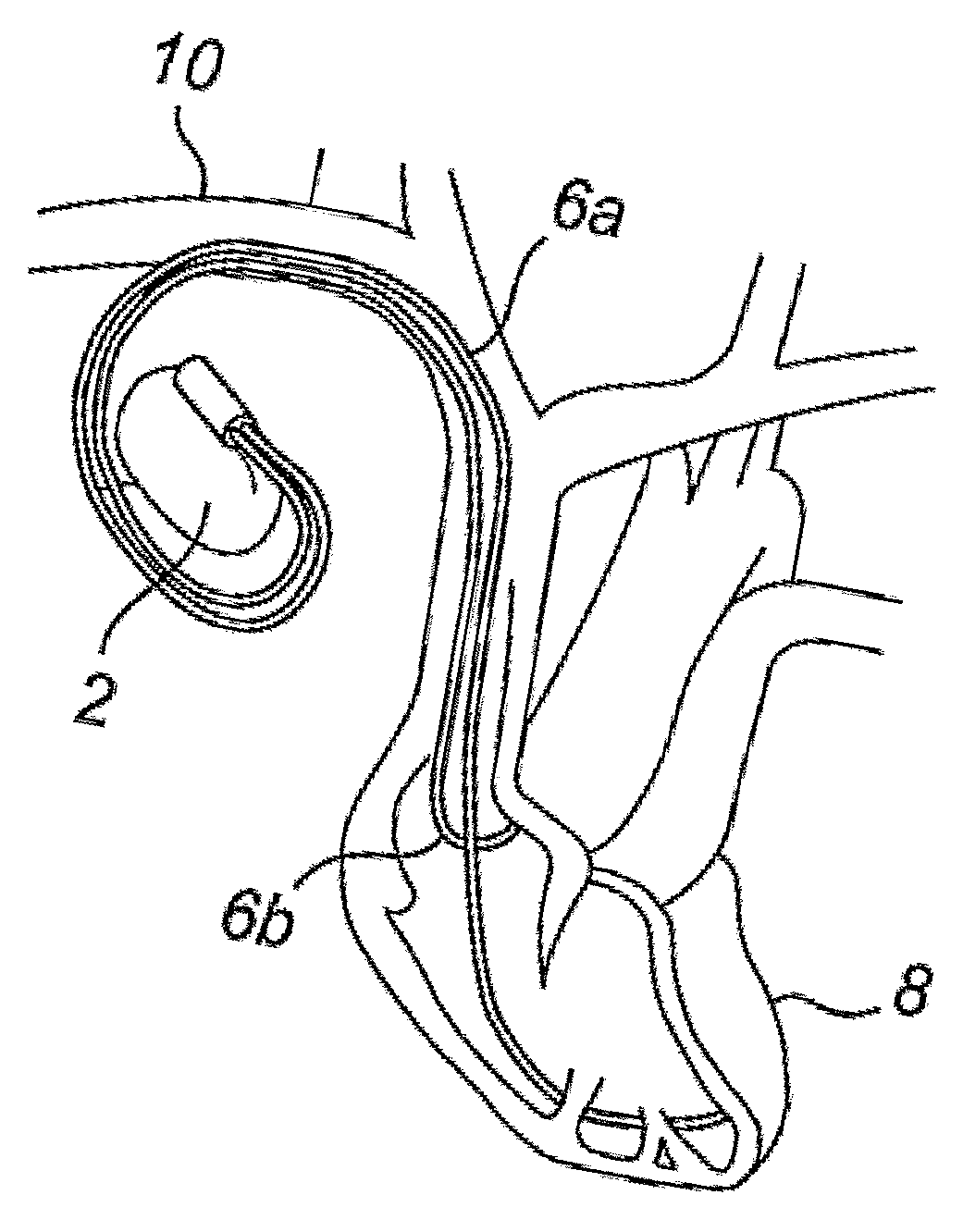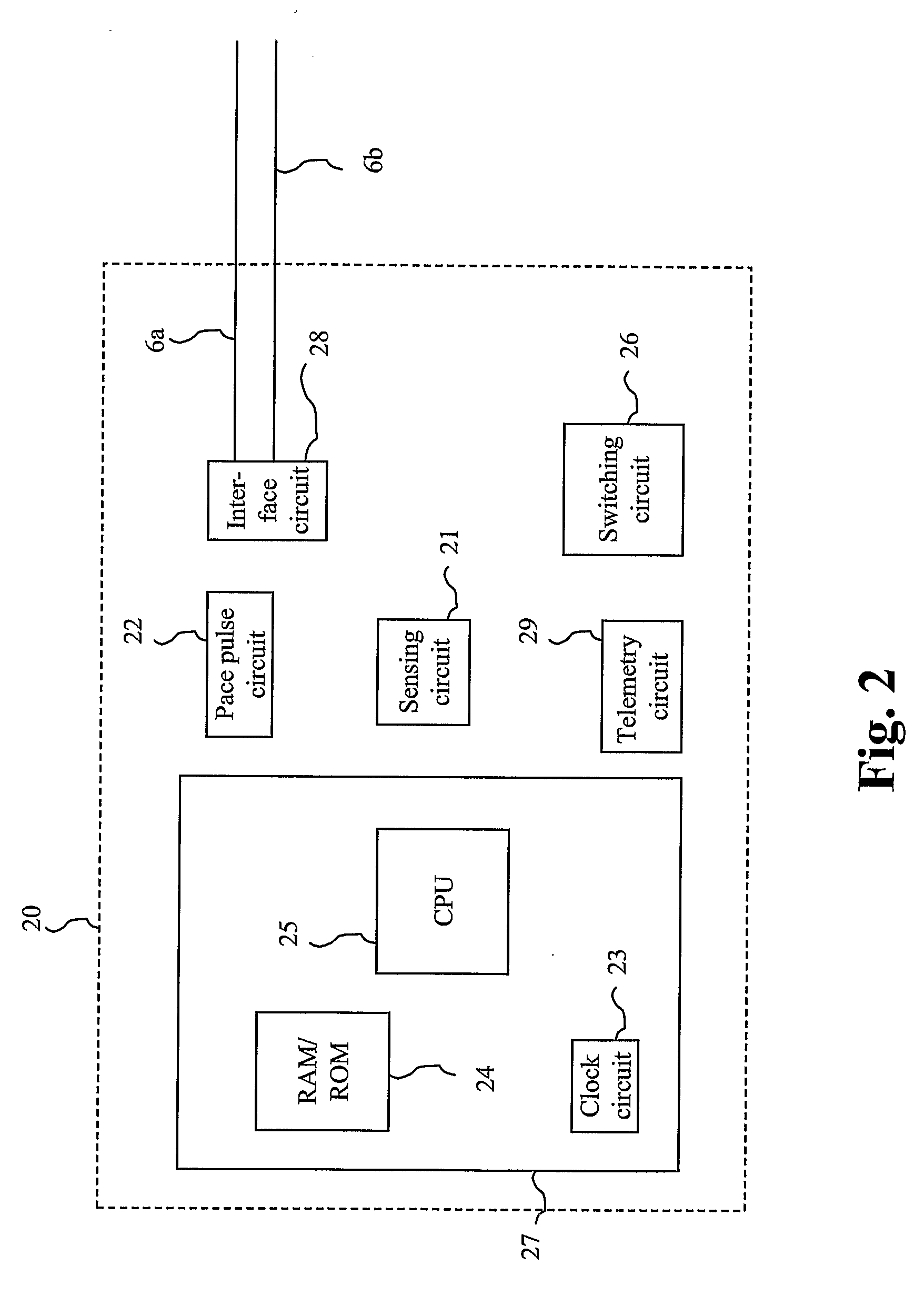Dual chamber pacemaker
- Summary
- Abstract
- Description
- Claims
- Application Information
AI Technical Summary
Benefits of technology
Problems solved by technology
Method used
Image
Examples
Embodiment Construction
[0047]In the following, the present invention will be discussed in the context of a pacemaker of dual chamber type.
[0048]With reference first to FIG. 1, there is shown a schematic diagram of a dual chamber pacemaker implanted in a patient in the present invention can be implemented. The pacemaker 2 comprises a housing being hermitically sealed and biological inert. Normally, the housing is conductive and may thus serve as an electrode. Two pacemaker leads are electrically coupled to the pacemaker 2 in conventional manner, namely a right ventricular lead 6a and an atrial lead 6b. The leads 6a, 6b extend into the heart 8 via a vein 10 of the patient. One or more conductive electrodes for receiving electrical cardiac signals and / or for delivering electrical pacing to the heart 8 are arranged near the distal ends of the leads 6a, 6b. As the skilled man in the art realizes, the leads 6a, 6b may be implanted with its distal end located in either the atrium or ventricle of the heart 8. The...
PUM
 Login to View More
Login to View More Abstract
Description
Claims
Application Information
 Login to View More
Login to View More - R&D
- Intellectual Property
- Life Sciences
- Materials
- Tech Scout
- Unparalleled Data Quality
- Higher Quality Content
- 60% Fewer Hallucinations
Browse by: Latest US Patents, China's latest patents, Technical Efficacy Thesaurus, Application Domain, Technology Topic, Popular Technical Reports.
© 2025 PatSnap. All rights reserved.Legal|Privacy policy|Modern Slavery Act Transparency Statement|Sitemap|About US| Contact US: help@patsnap.com



